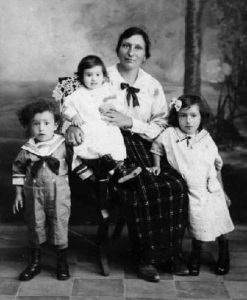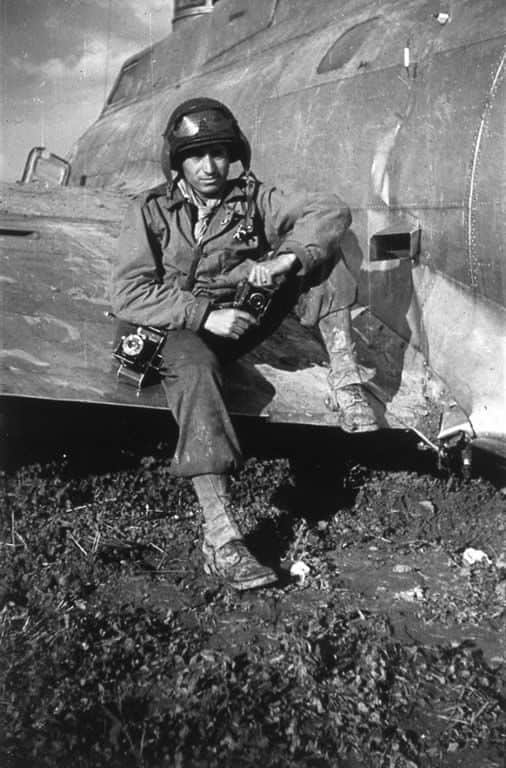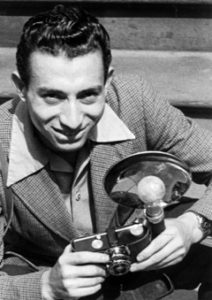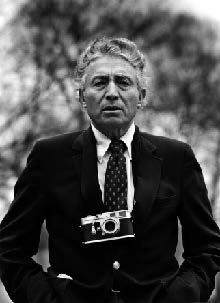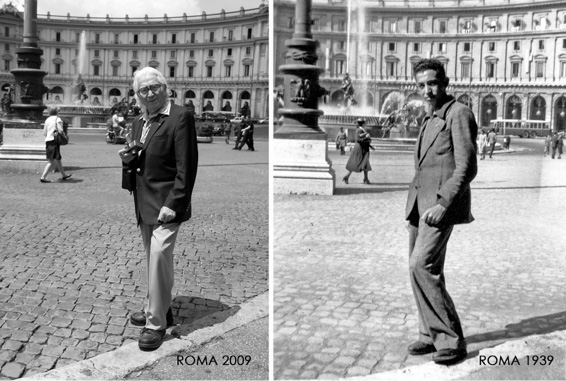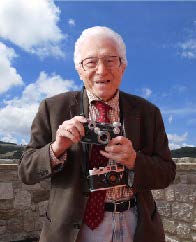“You have to make the world a better place. If you’re not trying as best as you can, what’s the reason for living?”
– Tony Vaccaro
Michael A. “Tony” Vaccaro has captured a broad range of our world in an almost 80 year career as a photographer. His earliest work as a high schooler exhibits journalistic integrity, and during WWII he sought out beauty and irony. This led to a life’s work in fashion, travel, the reconstruction of Europe, and celebrity portraits. Most of these half-million images have never been seen, and are only now being discovered, shown, and sold exclusively, from his state-of-the-art Tony Vaccaro Studio.
Born in Greensburg, Pennsylvania on December 20, 1922, Tony’s early years were tumultuous. He shuttled back and forth between the USA and Italy. Threatened by the mafia in 1925, the family returned to their homestead in Bonefro, Italy, where, within months, accidents and illness made Tony an orphan by the age of four. Tony’s sisters were placed in an orphanage, but Tony was handed off to an abusive uncle to work on a farm. As fascism grew in Italy and WWII burgeoned, Tony used his passport to return to America in 1939.
Tony attended Isaac E. Young High School in New Rochelle, NY, and fondly recalls visiting the World’s Fair. He was interested in sculpture, but Chemistry teacher Bertram Lewis introduced him to photography. “Tony,” he said, “you are a born photographer”. In 1942 Tony bought his first camera, an Argus C-3. These earliest contact sheets demonstrate impeccable balance, timing, integrity, technical innovation, and an eye for whimsy; all of which characterize his subsequent decades of work.
“I’m gonna buy a camera, learn how to use it, and show the world the real pictures of the war.”
– Tony Vaccaro
Drafted into the US Army after high school graduation, Tony was sent to England with the 83rd Infantry Division in April, 1944. Tony went on during World War II to shoot over 8,000 photographs, of which nearly 25 percent survive today. As a front line infantryman, Tony dutifully chronicled all aspects of war from the mundane logistics of food preparation and mail delivery, to the intense fire-fights and unspeakable carnage he witnessed from Normandy to Berlin. Included in his trove of surviving war images is Eisenhower’s favorite, the monument-worthy “Kiss of Liberation”; the transfixing “Last Step of Jack Rose”; and the sepulchral “Death in the Snow”. Such iconic representations of war led the BBC to describe him as the “Greatest combat photographer of WWII”
After the war Tony remained in Europe shooting assignments for the War Department and the Stars and Stripes. He bought a surplus Jeep and logged over 100,000 miles across the continent as cities and people rebuilt. In 1948 he joined Weekend Magazine in Paris, finally returning to New York City to relax and decompress late in 1949.
“In my photos what I want to see is dignity. In my photos man is king.”
– Tony Vaccaro
But Tony’s hiatus lasted mere weeks. He started a twenty-eight year career freelancing for virtually every major publication: Flair, Look, Life, Venture, Harper’s Bazaar, Town and Country, Quick, Newsweek, and many more. Tony became a favorite of picture editors like Arthur Rothstein, who called Tony a “fantastic photojournalist, fashion photographer, general photographer, with exquisite taste and great technical ability. Tony’s specialty is versatility.” He bi-located professionally between New York and Rome from 1954 to 1969.
In 1964, LIFE sent Tony Vaccaro to Finland to do a story on Helsinki’s Marimekko fashion house. On that assignment he met, and later married, Anja Lehto, one of Marimekko’s star models. He had two sons with her, Francis and David.
“Il Maestro”, as the Italian press calls him, Tony has won numerous honors and awards. These include the Art Director’s Gold Medal (New York City, 1963), The World Press Photo Gold Medal (The Hague, 1969), The Legion of Honor (Paris, 1994), The Medal of Honor (Luxembourg, 2002), Das Verdienstkreuz (Berlin, 2004), and the Minerva d’Oro (Pescara, 2014).
Since retiring in 1982, Tony has been exhibited over 250 times and has published or been the subject of ten books and two major films including HBO’s release of “Underfire” in 2016. In 2014, he opened the Tony Vaccaro Museum in Bonefro (Italy). In 2015, at the age of 93, Tony opened his own photo studio in New York City, Tony Vaccaro Studio. The works of Tony are in numerous private and public collections including The Metropolitan Museum of Art in New York, the Centre Pompidou in Paris and the Library of Congress in Washington.
Tony gained unprecedented access to many of the greatest personalities of the twentieth century: kings and queens, presidents and popes, writers and actors, artists and scientists. Without heavy equipment and assistants, without demanding poses or props, Tony preferred natural light and settings to make his subjects feel comfortable in their station. His work from month long travel assignments to Iran, Saudi Arabia, Egypt, Ireland, Argentina and Greece balance his fashion and celebrity portfolios and stand as textbooks of landscape and street photography. During this career he has met and photographed leading figures including Giovanni XXIII, John Fitzgerald Kennedy, The Eisenhower Family, Enzo Ferrari, Greta Garbo, Pablo Picasso, Federico Fellini, Jackson Pollock, Georgia O’ Keeffe, Maria Callas, and many more: too many to list. Iconic are his friendships and storied of Alberto Burri, Sophia Loren and Marcello Mastroianni.
Today, he lives and works in Long Island City and spends his days organizing his pictures in the Tony Vaccaro Studio. Here he entertains guests, oversees scanning and continues to take pictures and develop them in his dark room. Residing locally he enjoys playing with his newborn grandchildren, cooking spaghetti and of course making prints.
“I was born with this idea in my head that every photograph has an order. I have always believed in this.”
– Tony Vaccaro
